Microscopists have become very inventive when it comes to finding mounting materials to make the subjects they are imaging more obvious. One way of doing this with diatoms is to use something with a high refractive index (RI). While organic based mounts can provide some improvement, some of the inorganic mounts have very large RIs, and as such are able to produce slides with very good contrast. Metal and metal oxide slides are one approach (such as the work by Horace Dall which I have discussed here and that of John Dale, see here). Another approach is the use of arsenic sulfide (known by mineralogists as Realgar). I am currently in the process of writing a couple of research articles, one on metal and metal oxide mounts, and another on Realgar mounts, which I hope to publish later this year. For now though I wanted to share some images from a historic Realgar slide made by Henri Van Heurck.
The slide was likely made sometime around the 1880s, and is a strew of a number of different diatoms mounted in Realgar. I’ll show a picture of the slide later, but for now here are some images from it, captured on my home built Olympus BHB microscope.
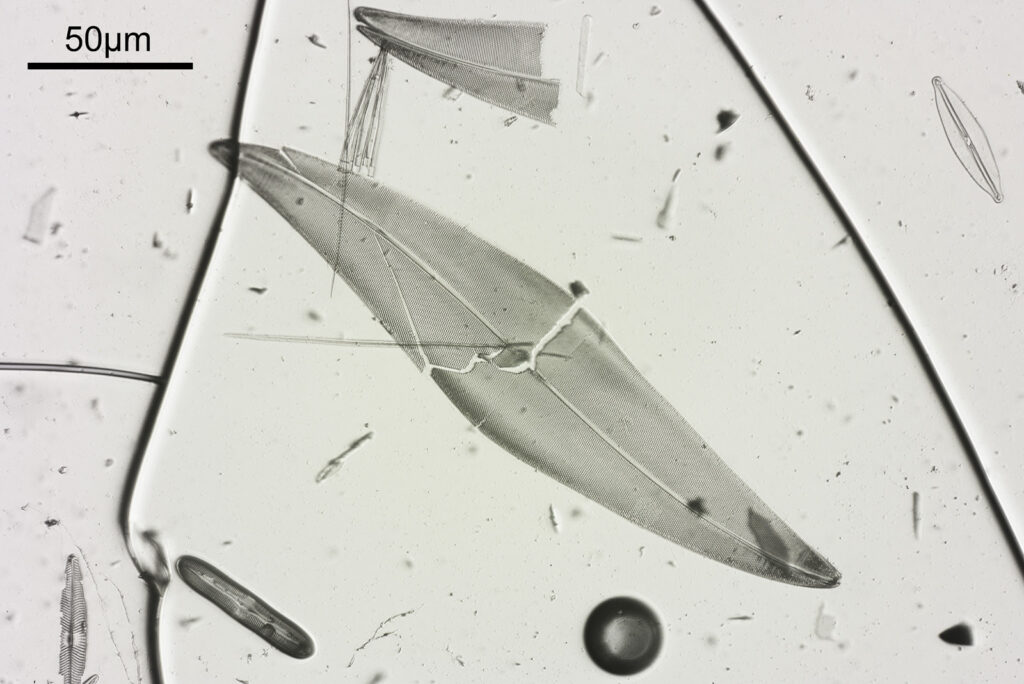
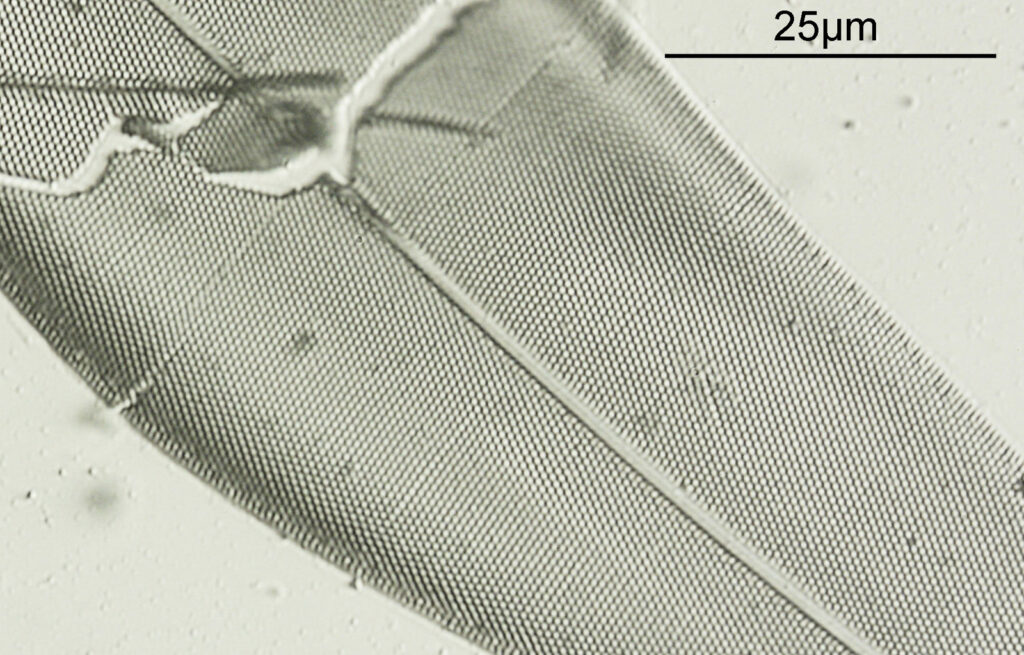
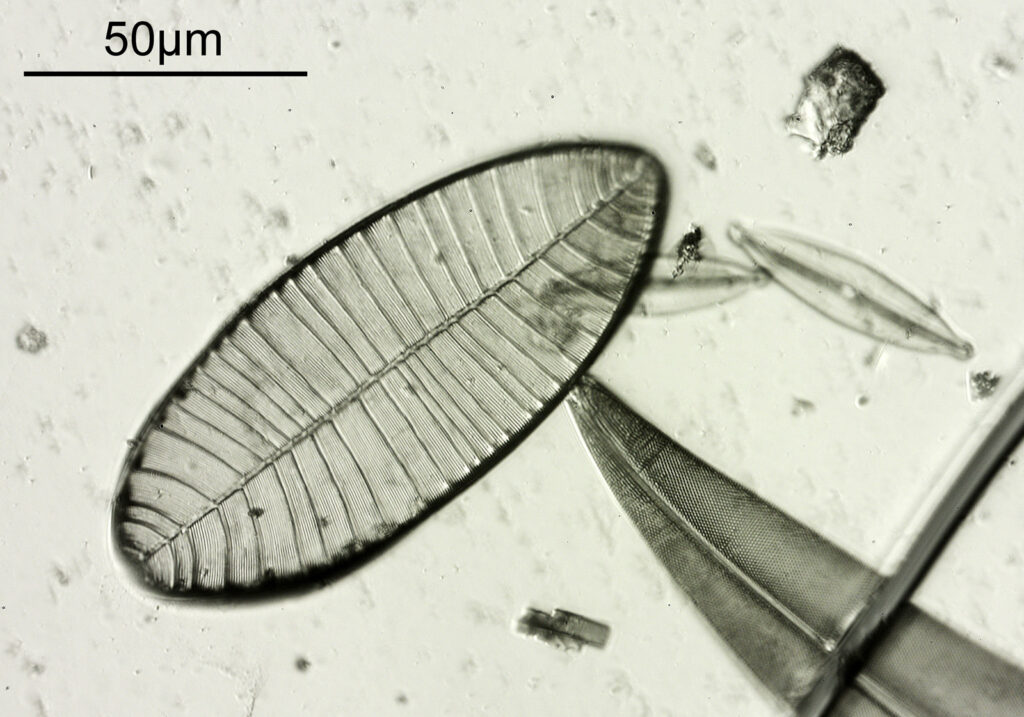
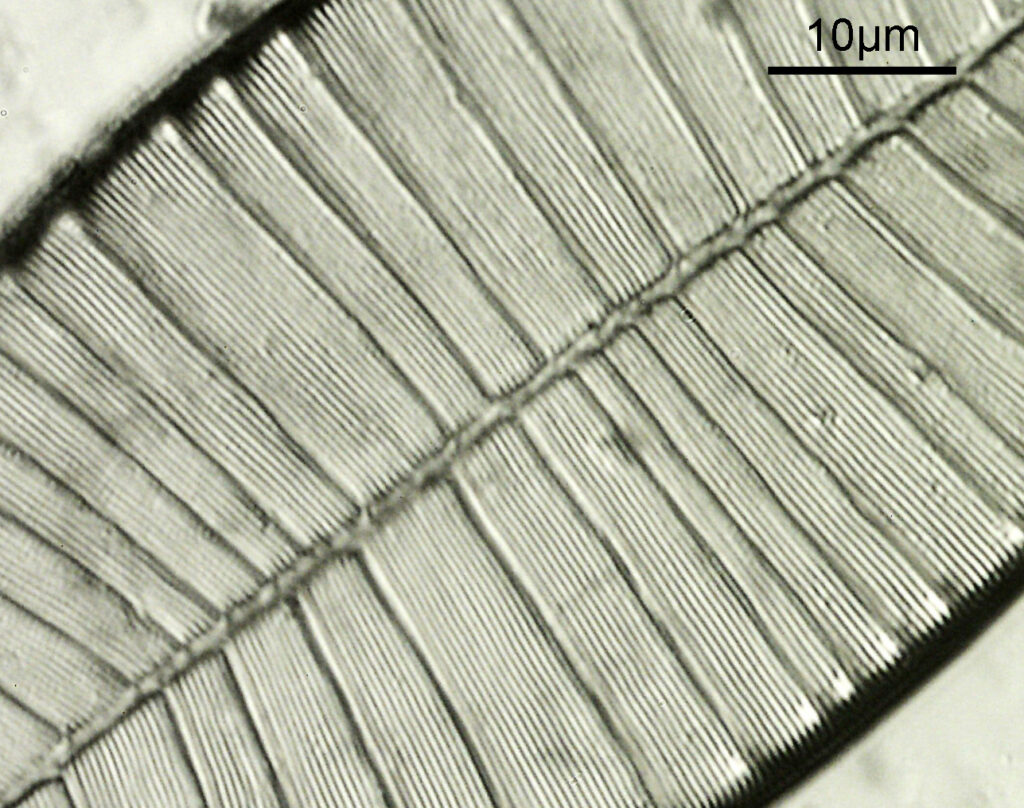
The images above were captured using a 40x Olympus Dplan Apo UV objective (NA 0.85) and with oblique illumination from below. The high contrast the mount provides is evident in the images. They were produced using white LED light and the mount itself is a yellow colour, as can be seen below.
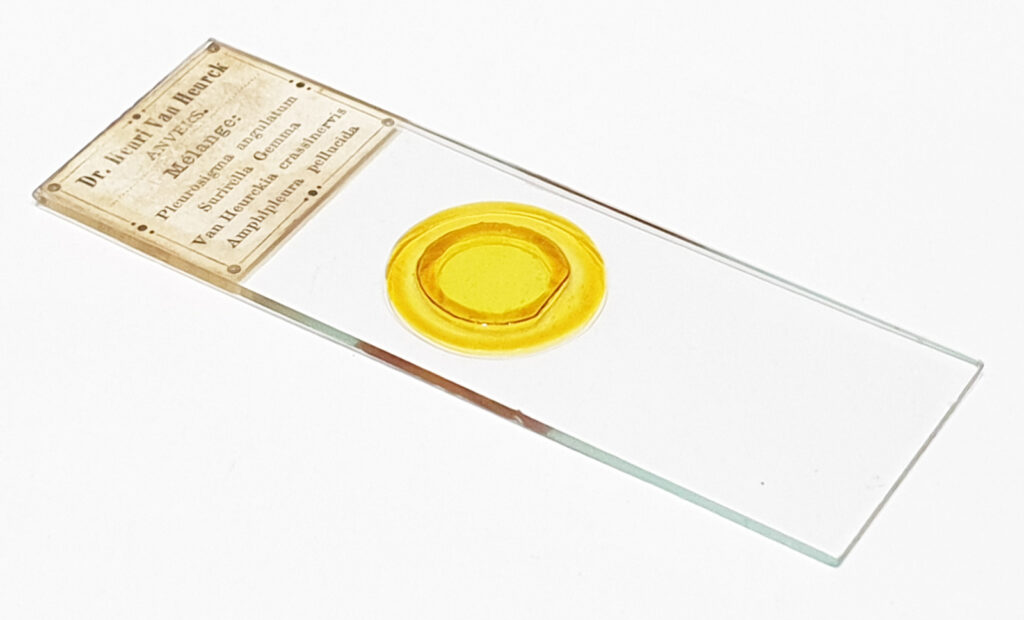
Realgar slides are delicate and light sensitive, so effort must be taken to store them in the dark and only expose them to light during imaging. Very often the slides show cracking of the Realgar and this is evident here as well.
It should be mentioned that making the slides is a hazardous process, and should only be attempted by someone familiar with the use of dangerous chemicals. This is probably one of the reasons why the technique is no longer done.
I have a number of Realgar slides in my collection now, and as mentioned above aim to write a paper about these fascinating historical items later this year.
As always thanks for reading, and if you’d like to know more about this or other aspects of my research, I can be reached here.
